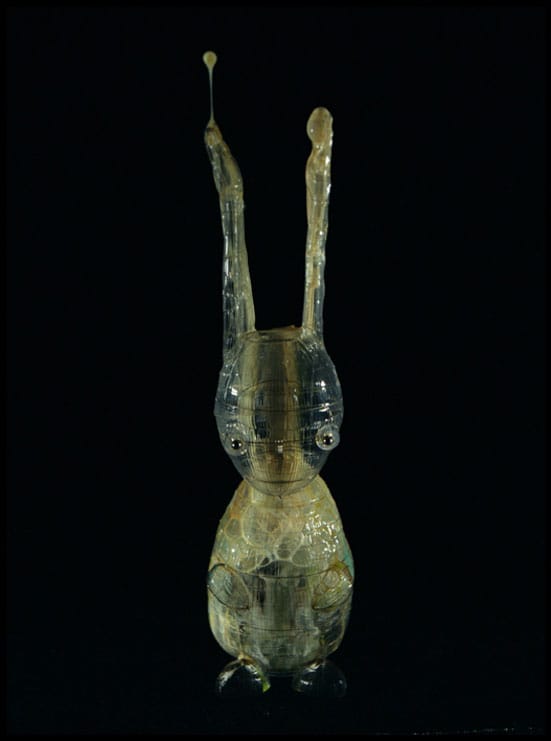6th October 2007 — 11th November 2007
In
the downstairs gallery space of Maureen Paley a sequence of fifty
snapshots depicts various aspects of life somewhere in Africa. Images
of tired buildings, abandoned or not yet completed, sit alongside
pictures of children playing in the street. These could almost be the
photographs of a naive traveller charting his first experience of
backpacking, but the focus on unusual modernist architecture and
abstract industrial forms takes them somewhere else. In one, a truck
lies upturned by the side of the road, its cargo of timber spilt. In
another, two men stand in the dark, one holding a rabbit, the other a
knife. What begins as a seemingly banal succession of images develops
into an unusual and compelling narrative.
This sequence is a document of a journey made by Saskia Olde Wolbers and is presented
as source material for the video piece Deadline which is projected in the space
upstairs. The voice of a Gambian woman, Salingding, narrates the film and tells
the remarkable story of her family history and of her own sixteen-month journey
across 3000 miles of west Africa. In 1960, her grandfather's two wives gave birth
to two boys in adjacent rooms, on the same hour of the same day. They are described
as twins who had the 'luxury of having grown in their mothers alone'. One of
these boys, who would become Salingding's father, was deemed to be the younger
by virtue of the fact that he was thought to be a week early, and so these two
lives had their fates sealed almost at random.
The story runs almost in the form of a poem and the narrator's voice is
accompanied by distant African drums. It seems appropriate to describe
the sound before the visual because it is such an extraordinary tale
and it is stunningly rendered. Indeed the aural is so powerful that for
much of the film it dominates what we see on screen. This is not to
take away from the imagery, but the narrative is so rich that at times
the visuals struggle to compete, or there seems to be an imbalance of
some kind between the two. Like much of Olde Wolbers's work the content
is neither wholly based on fact nor purely imagined. She constructed
Salingding's narrative from an amalgamation of stories from several
different individuals that she met in a Gambian fishing village; a
mixture of local folklore and actual histories.
The imagery itself alludes to various aspects of the monologue
and is typical of Olde Wolbers's previous work in its abstraction of
commonplace objects. She creates strange and unfamiliar landscapes
which are imbued with a kind of hypnotic quality through her use of
slow, but often very extended, camera movements. There are five or six
principal visual themes running through the piece. One depicts
snake-like forms with scales coloured like the flags of African
nations. This references the 'Ninki Nanka', a python which has the head
of a termite and carries a small diamond on its cranium. Another
depicts a glass rabbit dripping blood, upwards, from its head. Slowly
the relationship to the photographs on the ground floor of the gallery
becomes apparent. The woman describes how her brother hit a rabbit
while driving. 'He got out of the cab and slit its throat, announcing
breakfast as he threw its limp body in the back of the van.'
Towards the end of the film Salingding asks 'do we all have journeys
mapped out in our central nervous systems like migrating birds? It
seems the only way to account for our insane restlessness' The idea of
the journey has always captivated the human imagination. There is a
certain romanticism attached to the notion of the traveller as someone
liberated from the banality of the everyday. Conversely, people's
reasons for moving from one place to another can also be desperate and
even essential to survival. Olde Wolbers's film charts an economic
migration of a family, a story that falls very firmly within the scope
of the latter of those two categories. It offers a bleak portrayal of
how fragile the hopes of those who 'desire to travel away from the
everyday squalor' can be. Of how corruption, or crime or governments or
any number of factors can stand between people and their dreams of a
better life for themselves and their families.
AJL
Maureen Paley
21 Herald Street
London E2 6JT
http://www.maureenpaley.com/
Open
Wednesday-Sunday, 11am-6pm
